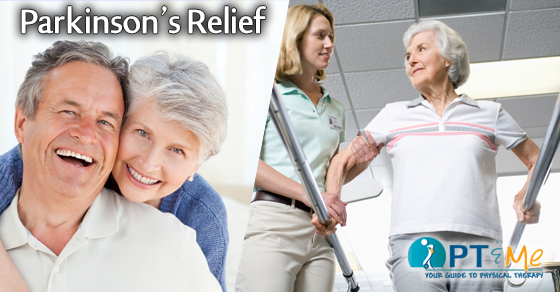The four primary symptoms of Parkinson’s Disease (PD) are:
1.) Tremor, or trembling in hands, arms, legs, jaw, and face
2.) Rigidity, or stiffness of the limbs and trunk
3.) Bradykinesia, or slowness of movement
4.) Postural instability, or impaired balance and coordination
Parkinson’s disease (PD) belongs to a group of conditions called motor system disorders, which are the result of the loss of dopamine-producing brain cells. The four primary symptoms of PD are tremor, or trembling in hands, arms, legs, jaw, and face; rigidity, or stiffness of the limbs and trunk; bradykinesia, or slowness of movement; and postural instability, or impaired balance and coordination. As these symptoms become more pronounced, patients may have difficulty walking, talking, or completing other simple tasks. PD usually affects people over the age of 50. 1
Should I exercise?
Research has shown that regular exercise benefits people with Parkinson’s disease. Exercise reduces stiffness and improves mobility, posture, balance and gait. Aerobic exercise increases oxygen delivery and neurotransmitters to keep our heart, lungs, and nervous system healthy. General exercise may also reduce depression. Learning-based memory exercises can also help keep our memory sharp.
What types of exercise are best for people with Parkinson’s disease?
Exercise programs that challenge our heart and our lungs as well as promote good biomechanics, good posture, trunk rotation and normal rhythmic, symmetric movements are the best. Exercises that promote attention and learning are also extremely beneficial.
What types of exercises do this? Exercises that require balance and preparatory adjustment of the body. Walking outside or in a mall, dancing, yoga classes, Tai Chi classes, stepping over obstacles, marching to music with big arm swings as well as participating in sports (ping pong, golf, tennis, volleyball) and aerobic or jazzercise classes promote motor learning.
When should I request a referral for Physical Therapy?
When first diagnosed, all patients should have a consultation with a physical therapist to define the appropriate exercise program tailored to “you”. This will also establish a baseline of your current physical status. Ideally, all patients with PD should have a good fitness program as well as specific exercises to maintain good posture and balance as well as improve symmetry in flexibility and strength. The therapist will also work on improving gait while using visual and auditory cues.
In some cases, where balance or musculoskeletal problems develop, supervised outpatient treatments a few times per week may be helpful. A program of individualized exercises addressing posture, balance and gait has been shown to be beneficial in decreasing the risk of falling. In every case, a regular home program of exercise is critical. 2
1. National Institute of Neurological Disorders & Stroke https://www.ninds.nih.gov/Disorders/All-Disorders/Parkinsons-Disease-Information-Page
2. Parkinson’s Disease Clinic & Research Center http://pdcenter.neurology.ucsf.edu/



